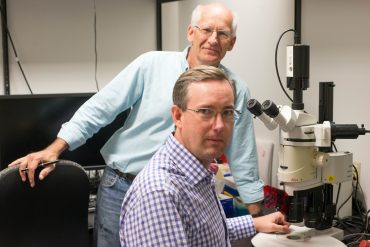Nov. 17, 2016

Live long and prosper: healthy mitochondria, healthy motor neurons?
Chris Lorson (front) and Mark Hannink (back) collaborate to study the role of mitochondria in motor neuron health, particularly in relation to spinal muscular atrophy, a neuromuscular disorder | photo by Jen Lu, Bond LSC Chris Lorson, a professor of veterinary pathobiology, and Mark Hannink, a professor of biochemistry, want to find a new way…